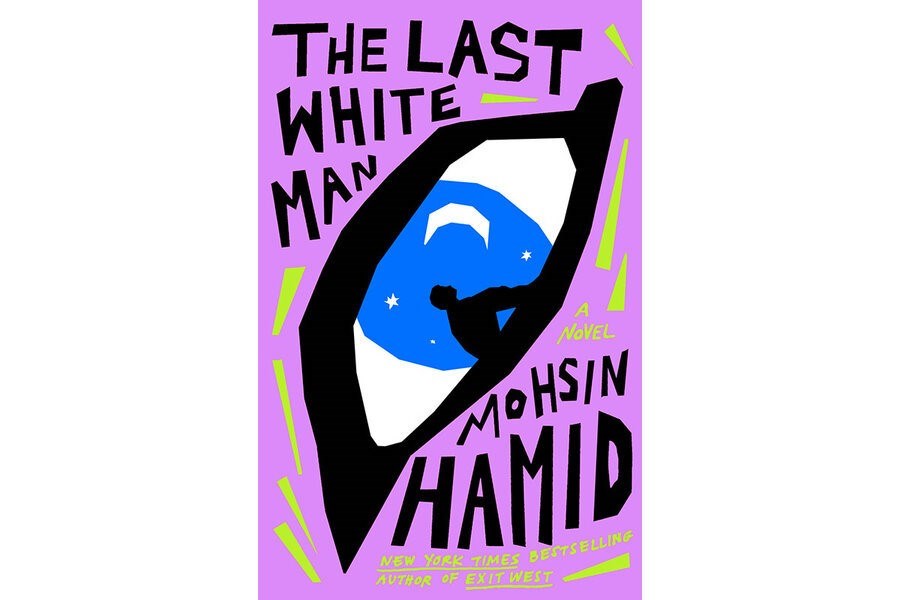REPRINTED WITH PERMISSION FROM THE CHRISTIAN SCIENCE MONITOR
British Pakistani novelist Mohsin Hamid explores a provocative question: Can white supremacy persist, if no one is white any longer?
 "The Last White Man," by Mohsin Hamid, Riverhead books, 192 pp.Christian Science Monitor, with permission
"The Last White Man," by Mohsin Hamid, Riverhead books, 192 pp.Christian Science Monitor, with permission
August 1, 2022
Mohsin Hamid focuses on a different societal ill in each of his novels, but he’s no scold. His aim is to imagine and point us to a better world. His last two books included “How to Get Filthy Rich in Rising Asia,” a pseudo self-help manual which sardonically flagged the dubious steps necessary to advance in a crooked society. In his most recent novel, the masterful “Exit West,” Hamid humanized the increasingly urgent issue of global migration with a propulsive love story about a couple fleeing their devastated city for their lives. (It is currently being adapted into a movie for Netflix by Barack and Michelle Obama’s Higher Ground Productions.)
Now, in his audacious fifth novel, “The Last White Man,” Hamid tackles racism and tries to picture a post-racial world. The concept behind this allegory is provocative: All the white people in an unnamed country turn “dark” (Hamid’s word) over the course of a few months. The transition period is rough for everyone, triggering dismay, paranoia, and violent flare-ups, but we’re quickly assured that things eventually settle down into “a kind of reprieve” in which people were “not visibly different, not obviously identified as being of one tribe rather than another.”
The novel begins promisingly with an echo of Kafka’s “Metamorphosis”: “One morning Anders, a white man, woke up to find he had turned a deep and undeniable brown.” To say that Anders, a weight trainer at a local gym, is discomfited is to put it mildly. His racial prejudices erupt through every pore. Hamid writes: “He was overtaken by emotion, not so much shock, or sorrow, though those things were there too, but above all the face replacing his filled him with anger, or rather, more than anger, an unexpected, murderous rage. He wanted to kill the colored man who confronted him here in his home.”
Anders calls in sick and stays home for days. His facial features, hair, and sense of self have changed along with his skin color. When he finally ventures out, he hides behind sunglasses, gloves, and a hoodie, even though he realizes the outfit is likely to make him appear more threatening to people who are still white. “People who knew him no longer knew him,” Hamid writes. He looked like “not just another person, but a different kind of person, utterly different.”
In an author’s note that accompanied my advanced reading copy, Hamid traces this novel’s beginnings to 9/11, which more directly prompted his second novel, “The Reluctant Fundamentalist.” “I was 30 then and had lived 18 of my years in the West,” he writes. “I had always been a brown man with a Muslim name. That had not changed. And yet something had changed. I had lost something profound. But it took some time for me to understand what it was: I had lost my whiteness. Not that I had been truly white. But I had been white enough – as a relatively well-paid, university-educated inhabitant of cosmopolitan cities – to partake in many of the benefits of whiteness.”
Page created on 8/3/2022 11:34:18 PM
Last edited 8/3/2022 11:45:10 PM
